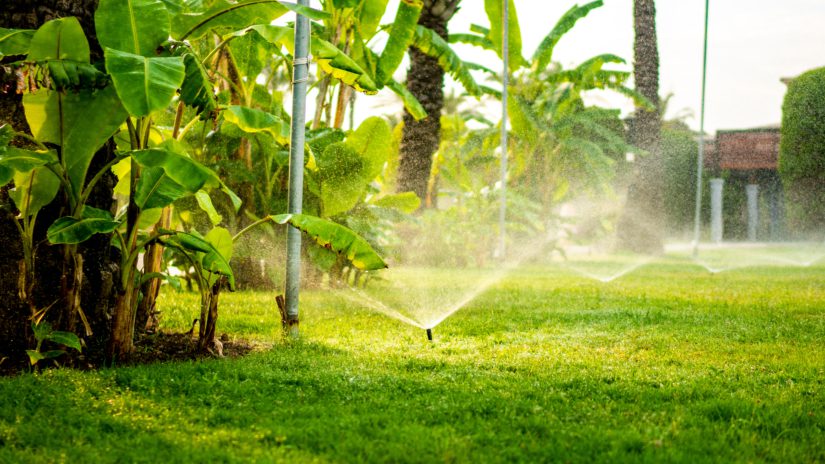How to Calibrate Your Sprinkler System

by Bruce J. Augustin, University of Florida
Knowing the amount of water your sprinkler system applies to your lawn is an important step in using water efficiently. Most people irrigate their turf for a given number of minutes without knowing how much water they are really applying. This leads either to giving too little water or to wasted water which runs down sidewalks and streets, or through the root-zone and deep into the ground where turfgrass roots cannot reach it.
Calibrating or determining the rate of water your sprinkler system applies is an easy job. You can use the following procedure if you have an in-ground system or a sprinkler at the end of a hose.
Calibration Procedure
- Obtain several (5-10) coffee cans, tuna fish cans, or other straight-sided containers to catch the irrigation water. Containers that are 3 to 6 inches in diameter work the best.
- If you have an in-ground system, place the containers in one zone at a time. Scatter the cans at random within the zone. Repeat the entire procedure in every zone because there may be differences in the irrigation rates.
If you use a hose-end sprinkler to water your turf, place the containers in a straight line from the sprinkler to the edge of the watering pattern. Space the containers evenly. - Turn the water on for 15 minutes.
- Use a ruler to measure the depth of water in each container. The more precise the measurement, the better your calibration will be. In most cases, measurements to the nearest eighth of an inch (0.3 centimeters) are adequate.
- Find the average depth of water collected in the containers by adding up the depths and then dividing by the number of containers.
- To determine the irrigation rate in inches (centimeters) per hour, multiply the average depth of water by four.
Time Required to Apply Water For Irrigation Rate
Now that you know your sprinkler system irrigation rate, you can more efficiently apply water to your turf. Use Table 1 as a guide for sprinkler times. For example, if the sprinkler system applies water at the rate of 2 inches (5.0 cm) per hour and you wish to apply 0.75 inches (1.9 cm) of water, then you would need to run your sprinklers for about 23 minutes.
| Amount of Water to be Applied | Irrigation Rate (Amount of Water per Hour) | |||
| 0.5 in. (1.3 cm) | 1.0 in. (2.5 cm) | 1.5 in. (3.8 cm) | 2.0 in. (5.0 cm) | |
| Minutes to Run each Zone | ||||
| 0.25 in. (0.6 cm) | 30 | 15 | 10 | 8 |
| 0.5 in (1.3 cm) | 60 | 30 | 20 | 15 |
| 0.75 in (1.9 cm) | 90 | 45 | 30 | 23 |
| 1.0 in (2.5 cm) | 120 | 60 | 40 | 30 |
To calculate the irrigation time for rates not listed in Table 1, use the following equation:
Minutes Required to Run Each Zone = Amount of Water to be Applied x 60 / Your Calibrated Irrigation Rate
Calibration Pointers
- Try to calibrate the sprinkler system during the same time the system is normally run so that water pressures are similar.
- Low water pressure can significantly reduce the amount and coverage of water applied by a sprinkler system.
- Never apply more than one inch (2.5 cm) of water per irrigation. Set time clocks on automatic sprinkler systems or timed manual systems for applying the proper amount of water.
- Most time clocks can be adjusted for more accurate time settings. Consult your local sprinkler company for details.
- If you use a hose-end sprinkler, a mechanical timer and shut-off switch that attaches to the faucet will help make watering more efficient.
- Avoid mixing sprinkler head types. Mistheads apply more water than impact heads. Match sprinkler heads for uniform coverage.
- Check the sprinkler system frequently. Replace broken sprinkler heads, clear clogged nozzles and adjust the direction of spray.
Water Efficiently. Don’t Waste Water.
More Information
For more specific information on turf irrigation, contact the Pinellas County Extension Service at 727-582-2100. Pinellas County Utilities can be reached at 14 S. Fort Harrison Avenue, Clearwater, FL 33756 or by phone at (727) 464-4000.